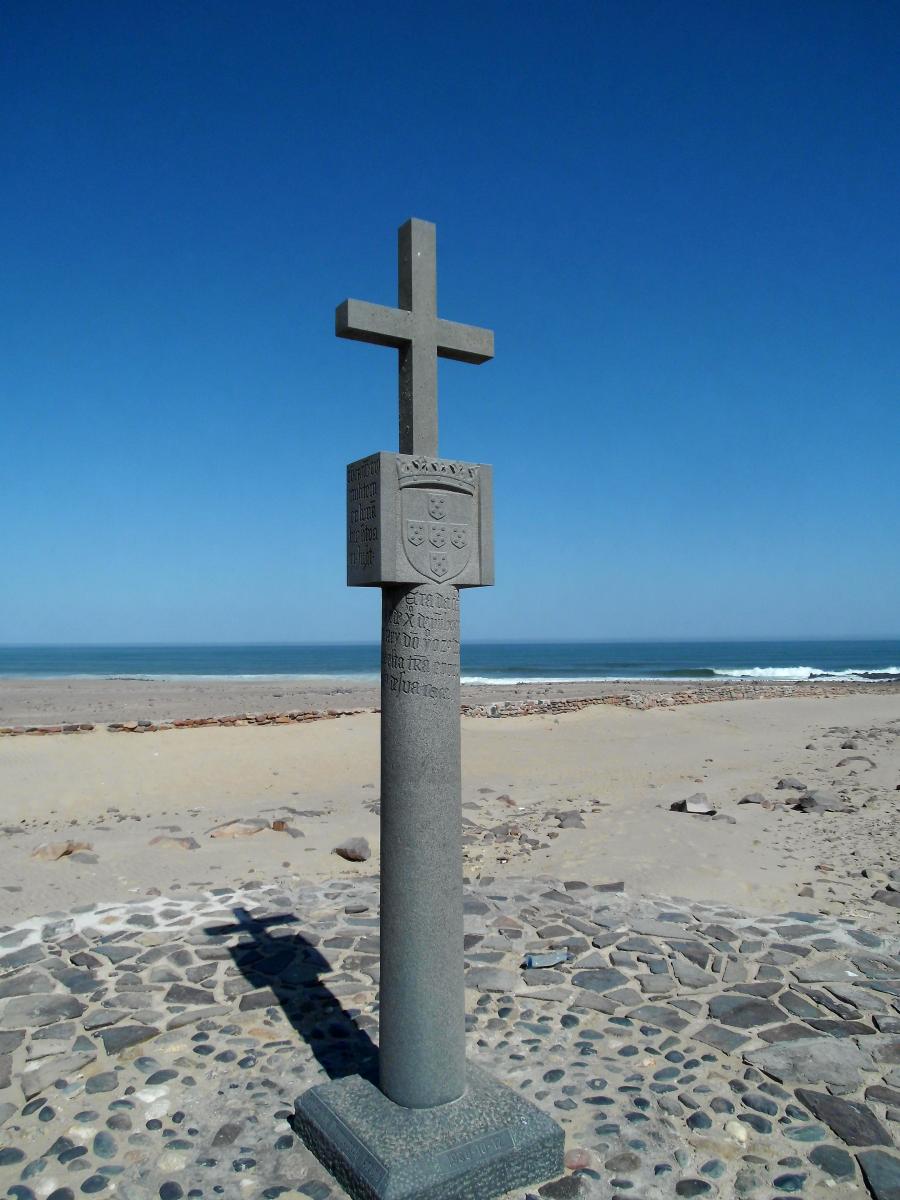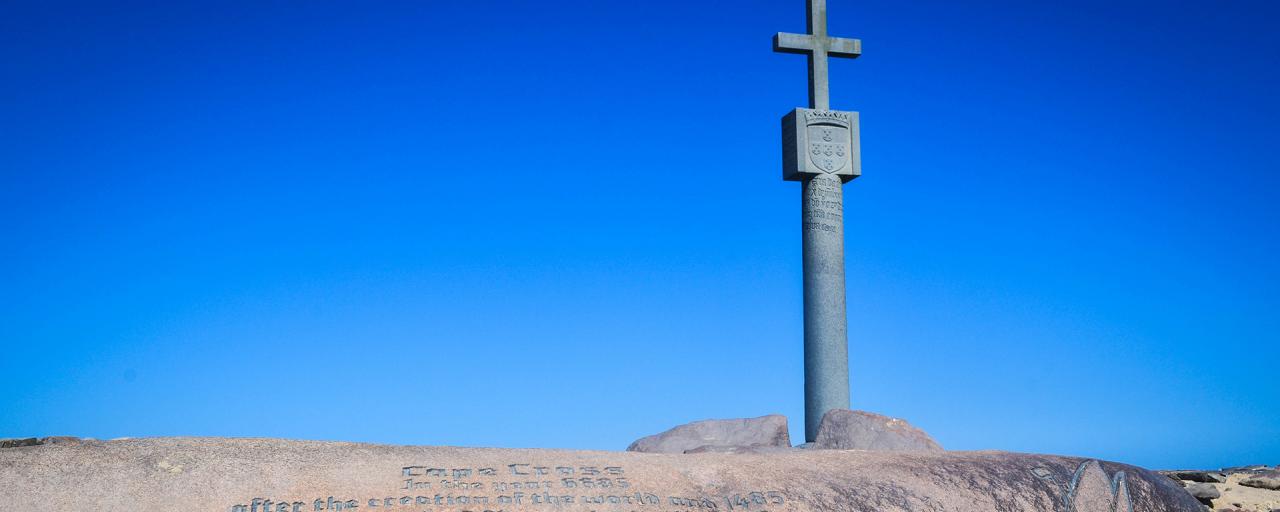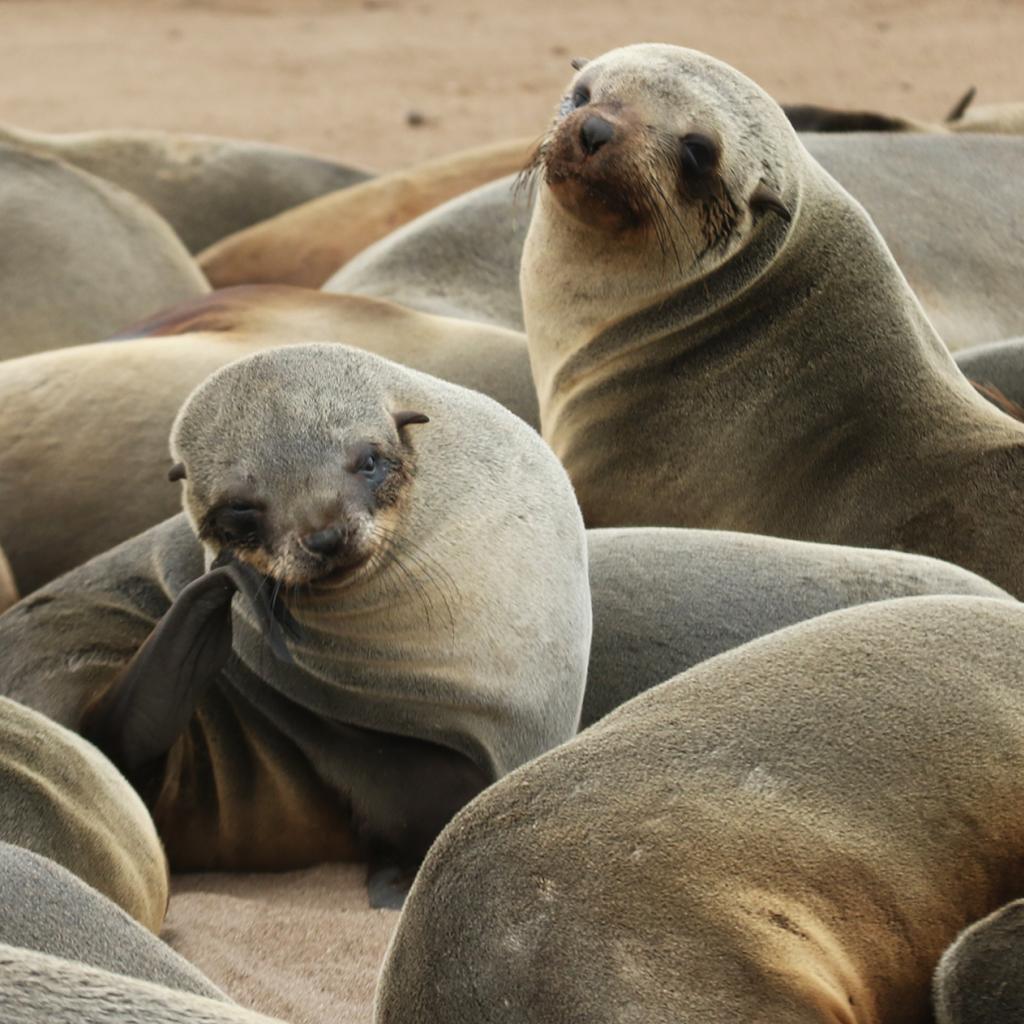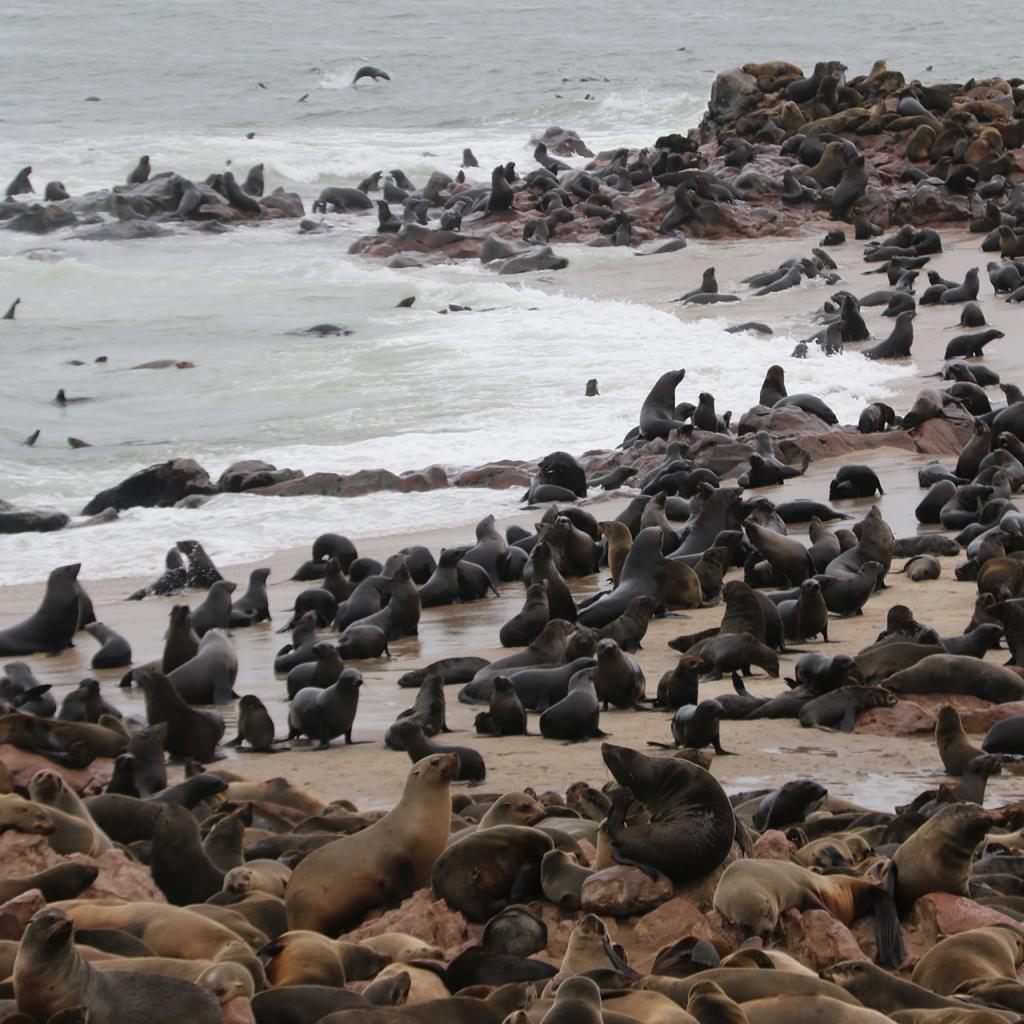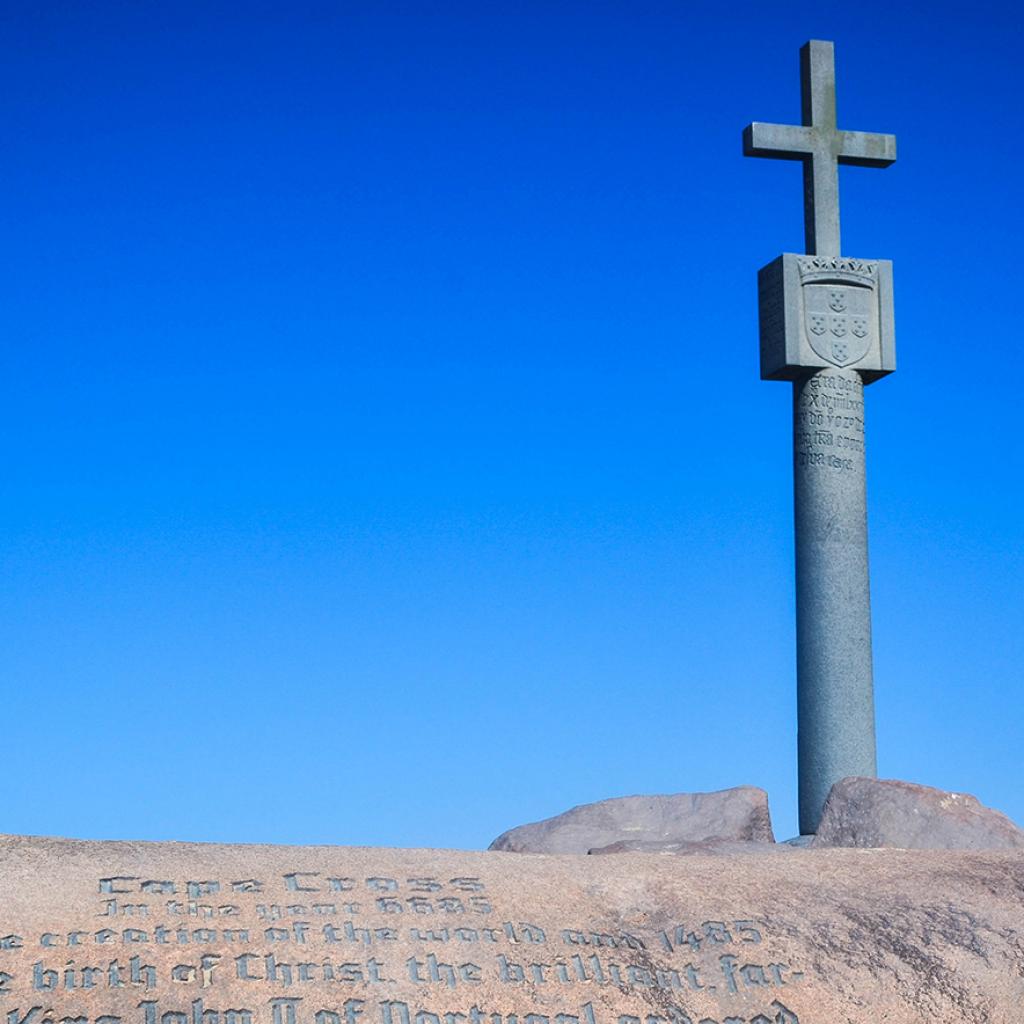Cape Cross, in Namibia, was discovered in 1486 by the Portuguese Diego Cao, explorer and navigator who, on behalf of King Joao II of Portugal, was looking for a sea route to reach the Indies.
Diego Cao faced a first expedition, that lasted six years, in 1482; during this journey, along the Western coasts of the African continent, he reached a place called Monte Negro, known today as Cabo de Santa Maria, in Angola, about 150 km South of today's Benguela.
During his second journey, from 1484 to 1486, he went even further South and, in January 1486, reached today's Cape Cross; he was the first European to explore this area.
The explorer Diego Cao has also erected two stone crosses, padrao in Portuguese, in the places of his landings: one was erected at Monte Negro, the other right at Cape Cross, that owes its name to this cross.
The Portuguese used to build crosses in the places where they landed; these crosses had different functions: a symbol of Christianity, documenting the possession of a territory and a point of reference for the other ships that passed by those places.
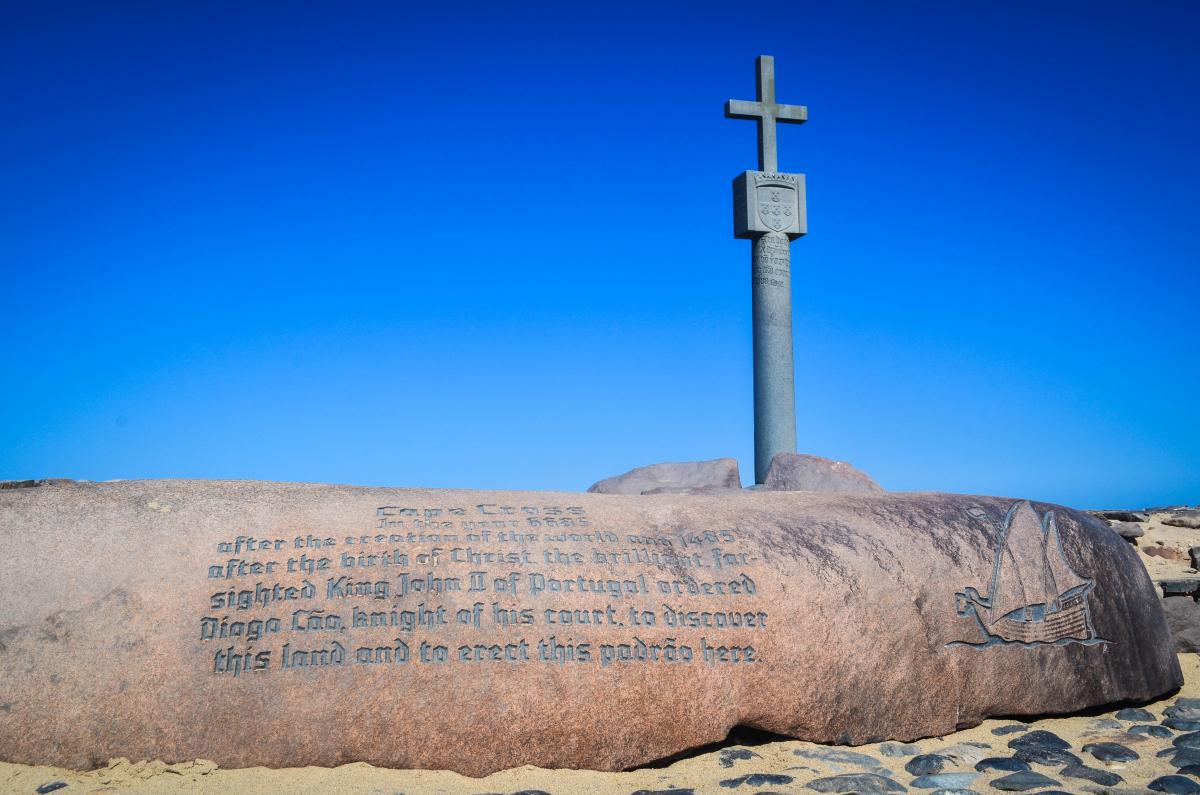
Cape Cross was the Southernmost point ever reached by a European, only later Bartolomeo Diaz was the first European explorer to dub the Cape of Good Hope in 1488.
The cross, erected by Diego Cao, consisted of a stone pillar surmounted by a cross, positioned precisely to claim the territory; from that moment this place was named "Cabo de Padrao" that means "Cape Cross" in English.
After two years from the landing at Cape Cross the crew returned home without their captain; all documents relating to the expedition were lost in a fire, and some archaeologists tried to find out what had happened to Diego Cao and where he was located, all agree that most likely he went into what is now the Sperrgebiet National Park, the reason for why they consider this hypothesis probable is that some objects were found that probably belonged to him and different gold coins.
The inhospitable coast of Namibia did not arouse the interest of subsequent explorers, and Diego Cao's cross remained there until the Germans arrived on the Namibian territory between 1883 and 1884.
Raven, captain of the Wolf frigate, placed a wooden bulletin board at Cape Cross, in the years following that episode interest in developing a port in this place grew, as a result the presence of Europeans increased.
In 1893, Becker, the captain of the Falke flagship, who was looking for a better port than Swakopmund, found the Portuguese cross, removed it and took it to Douala in Cameroon, from where it was then transferred on the Stettin steamer that transported it to Wilhelmshaven in Germany.
William II, emperor of Germany, had a replica built and, on 23 January 1895, he had it positioned 15 meters from the place where the original cross was located; subsequently the original cross was transferred to the Museum of Technology in Berlin.
The place where Diego Cao landed was declared a national monument on November 1, 1968 and, in 1980, the Director of the State Museum of Windhoek took steps to erect a replica of the cross at Cape Cross: a new cross in dolerite, a stone originating in Namibia, was placed in the exact spot where Diego Cao's cross was located and was inaugurated on October 11, 1980.
3 circular platforms were also made; while in 1986, on the occasion of the commemoration of the 500 years of the landing of the Portuguese explorer, stones were placed on which some information were engraved, one on each platform and one near the cross.
Over the years both Portugal and Namibia have exerted pressure on Germany to return the original cross, but Berlin has always refused to return the cross to Namibia; even after Namibia's independence, when the first Namibian president, Sam Nujoma in person tried to get the Portuguese cross back.
Many ships have been shipwrecked along the Namibian coast, near Cape Cross and all along the Skeleton Coast, since Diego Cao sailed these waters centuries earlier; some wrecks of unlucky boats are still visible, although they are eroded by saltiness, atmospheric agents and sometimes removed.
The Cape fur seals were sighted for the first time in 1884 off the coast of South Africa, the sighting was recorded in the logbook of a German boat, the Mowe.
In the years and decades following the Cape's fur seals began to be hunted for their meat and fur.
In 1895 it was discovered that the guano of water birds, that feed mainly on fish, could be used as fertilizer once it was dried; some people began to settle in the Cape Cross area to take care of the collection of this natural fertilizer; "Guano" is a word of Inca origin and literally means: mix of egg shells, feathers and bird droppings.
The Germans built a railway, the first in Namibia, about 20 km long, driven by a locomotive and donkeys, specifically to transport the birds' guano and the Cape fur sealsto the port, where they were embarked on ships to Europe; today we can still see, in some point, the mark of the tracks.
The guano, in addition to being used as a fertilizer, was also a component used to build explosives.
Two years of exploitation of this territory by an English company, has cost the lives of 92 men, the reason is to be found in the precarious conditions in which they were forced to live, due to the environment and irregular supplies of food and water; later they began to supply themselves with drinking water condensing the sea water.
These people were dedicated to the harvesting of the guano and hunting of the Cape fur seals; during the first year of activity they collected 6,000 tons of guano and 2,500 fur seals.
In 1903 the exploitation of the guano was exhausted and the Cape fur seals colony was so reduced in number that the economic activities ceased.
Now what remains of those activities of the past is some rusty metal and a cemetery, with about 100 tombs, near the Cape Cross Reserve reception.
The guano was considered such a precious asset as to have been nicknamed "white gold"; even today it is collected from the platforms off the coast of Namibia.
